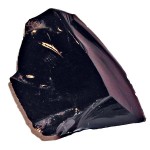|
|
|
Smuggling has been one of the most common economic activities of all time, yet it is all but absent from the historical record. Smuggling has fed the poor and provided a half-decent living to the workers of the world when they faced no other choice but grinding poverty. It was the one way to get affordable goods.
Smuggling was the one and only ‘discount store’ at nearly every place and in every period of history. It made life bearable. One of the very few historians to acknowledge smuggling writes this:
“Smugglers and their customers probably outnumber legal traders in many societies around the world; this is nothing new, they always have.”
Most of the products that have been smuggled were not the usual fear-inducing things like drugs, weapons and slaves. In most cases, the forbidden commerce involved salt, wool, fabric, tea and brandy.
Cooperation: Humanity’s Norm
Humans cooperate. This has been true as far back as we can see and it remains true. Left to their own devices, most people tend to get along. One of the great proofs of this – and one that I’ve never seen presented – is the fact of ancient trade.
Like smuggling, long-distance trade is also mostly absent from the history books. Some references do exist, of course, but grossly out of proportion to trade’s importance.
Humans always trade – at all periods of history and with every reachable group. People trade without ceasing, reaching out to distant peoples who look different, speak differently, live differently and worship different deities. And they have done this since long before the dawn of history.
Cooperative trading began thousands of years before there were states, treaties, or any other such institutions to “protect property rights.” For as long as humans were humans, they gathered up valuable goods, figured out how to transport them, and took off to find far-off strangers to trade with. On the other end, strangers were welcomed. They were not routinely robbed (though that did sometimes occur). The people on the far end took their goods, asked about other goods that could be obtained, and made deals to exchange their surplus goods in return. Soon enough, young men were making the trek in reverse. Trade flourished and life on both ends improved.
This is ubiquitous in the archaeological record. These traders are the real heroes of history. Their lives and work contributed to human happiness far more than that of any king or prince. No one told the traders that they should go and seek others and no one authorized them; they simply went and traded because it was beneficial and natural to do so.
The Obsidian Traders
Let me establish this point with the case of obsidian, a naturally-occurring volcanic glass. Here is a photo of obsidian:

When broken, obsidian leaves a very sharp edge; so sharp, in fact, that obsidian is still used for surgical scalpels. This characteristic made it highly useful for knives, scrapers and arrowheads.
The great thing about obsidian, from an archaeological standpoint, is that its source can be determined by its chemical makeup. By sampling the hardened lava from ancient volcanoes, the point of origin for obsidian can be clearly determined. So, we know where it comes from, and, of course, we know where we find it.
Obsidian tools can also be very accurately dated by a hydration process. That is, by measuring the absorption of water into its cut surfaces. This can be done with a simple light microscope, and the process has been refined with multiple experiments.




